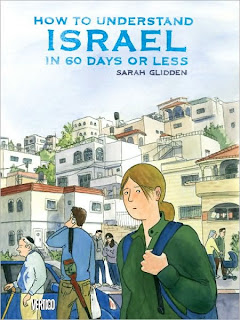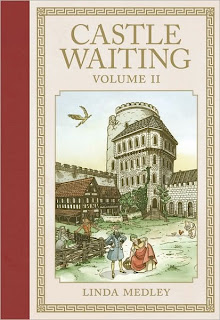
Every family has a history. For most of us, it's just at that level: the history of our family. But some are unfortunate enough to have large-scale history mixed up in their family's past -- which is never good, since history is almost exclusively the account of horrible things happening, from wars to famines to disasters. Belle Yang's family were successful, well-off farmers and landlords in Manchuria when the Japanese invaded in the early 1930s, which meant nearly twenty years of "history" for them even before the Communist takeover in 1949.
Yang herself has some history; in 1986, four years after she graduated from college, she ran back to her parents to get away from an abusive boyfriend turned stalker. (The stalker, whom the family calls Rotten Egg, shot up the office of a lawyer who tried to help her, among other unspecified violent acts.) Yang's friends abandoned her when she was stalked, and she'd lost everything she owned while getting away. And so she was stuck, living quietly with her parents, apparently waiting for Rotten Egg to give up on her and go away. (There's no sign that any direct police or legal protection for Belle was sought, or was useful.) While she was trapped at home with her parents, in between trips to China to further her art studies, Yang got her father to tell her the story of his family, through the thirties and forties, and she wrote those stories down, turning them into comics along the way.
Forget Sorrow
, presumably,
is that record -- the pages that Belle Yang began to create in 1989 -- but she's had a twenty-year career, writing and illustrating books for adults and children, in between those conversations and the publication of this book. (And I've never known a creative person who could put something in a drawer for years, and then pull it out and want to publish it just as it was originally made.) So I have to assume that
Forget Sorrow is based on the comics pages she made at the time, and on the notes she took from "Baba's" (her father's) stories, but that most of the art, and even most of the words, were set down on paper much more recently that that.
Yang's father's family was large and fractious, with a patriarch (Baba's grandfather), his four sons (who were not unified in anything), another sister or three (this is never clear, since women were vastly less important in general and to their father's families in the China of that day), and the various grandchildren (Baba seems to be among the younger cohort; he has cousins and brothers that are married while he's still a boy). It's a complicated web of connections, and Yang never takes the time to carefully explicate the family, but instead apparently follows her father's stories as he told them. The Yang family really cries out for the power of a well-designed comics page to explain and connect -- one page of family tree, or a schematic of their Xinmin estate, would have been vastly helpful. Instead, the reader grabs on the crumbs scattered through Baba's speeches, and slowly builds a mental map of the family as they squabble through the relatively rich days of the 1930s.
Yang's telling doesn't focus closely on the passage of time, though, and never foreshadows future events, so, for those of us who are unsure how strongly WWII affected Manchuria, and when, every event of
Forget Sorrow will be a surprise. But the outside world does shadow Xinmin and the Yang family, more and more -- first with the always off-page Japanese, and then with the battles of the Nationalist and Communist armies, and finally with the revolution in 1949, which shatters the family. The bulk of
Forget Sorrow, though, is about the family history rather than Chinese: the diaspora of the Yang family is dealt with in the last pages, after two-hundred-plus pages of their conflicts and arguments in the fat years.
Yang's art is expressive and bold, with simplified faces and backgrounds to give a timeless feeling -- and, not secondly, to instantly identify all of those many members of the Yang family, Second Aunt and Third Brother and the rampaging bands of younger children. It helps open up
Forget Sorrow to a non-Chinese audience, making this the story of one family and their conflicts, familiar to all of us from our own lives and many earlier stories in all media. But the telling of this story is still confusing, particularly in the early pages, throwing the reader into the middle of a big multi-generational family without much guidance -- and Yang's own story, as she presents it here, is entirely passive, listening to family stories until her stalker finally disappears on his own.
Forget Sorrow is a story that doesn't entirely find its focus: is it about Baba's journey, or Belle's, or the parts of both that resonate with each other? But it's made of interesting, evocative parts and does give a strong sense of this particular family at a pivotal time in their country's history.
Book-A-Day 2010: The Epic Index
 There are people who can write coherently for long stretches about art, making intriguing comparisons and speaking knowledgeably about techniques and influences, but I'm not one of them. When I used to have to talk about art regularly, back in my book-club days, I often resorted to waving my hands about wildly, a small store of stock phrases, and, most dependably, pointing at things in the indispensable Spectrum series of art annuals.
There are people who can write coherently for long stretches about art, making intriguing comparisons and speaking knowledgeably about techniques and influences, but I'm not one of them. When I used to have to talk about art regularly, back in my book-club days, I often resorted to waving my hands about wildly, a small store of stock phrases, and, most dependably, pointing at things in the indispensable Spectrum series of art annuals.

















